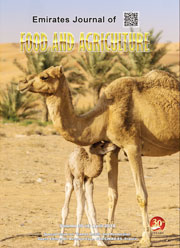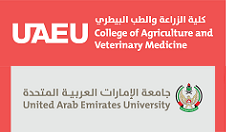Time course variations in ameliorative potentials of spermidine and kinetin for chromium toxicity - growth analysis indices of four Vigna mungo L. genotypes
DOI:
https://doi.org/10.9755/ejfa.2022.v34.i3.2836Abstract
The experimental studies were performed for finding antagonistic role of PGRs viz., Kinetin a Polyamine (Spermidine) for soil supplied
Chromium toxicity on mash genotypes with age. Four varieties i.e., 80, 88, 97 and ES-1 were sown. Earthen pots were used and placed
in complete randomization arrangement. Chromium (Cr) doses were applied @ 30mg/kg and 60mg per kg soil. This was done by adding
CrCl3 salt in solutions form after 30 days of sowing. Spermidine and Kinetin were sprayed as 1.0 mM and 100.0 mM solutions respectively
after 30 and 40 days of sowing. Growth analysis studies were carried when plants were of 30 and 46 days age. Chromium (Cr) at low
level of concentrations in soil lowered the relative increase in plant height more effectively during growth interval 2 while, at higher
toxicity levels, metal affected the shoot growth in the growth interval 1. Kinetin spray decreased the relative increase in plant height
during growth interval 1while, Spermidine affected so during growth interval 1, increased the parameter. Chromium, at both levels of its
concentration in soil, decreased the root growth rate more effectively during growth interval 2. Kinetin reduced relative increase in root
length during growth interval 1 and increased it in the next growth interval. However, Spermidine effects started in the growth interval
1 and reached its maximum during growth interval 2. Chromium at lower concentration (30mg/kg soil) decreased the relative increase
in leaf area during both intervals of growth. Exogenous Kinetin positively affected relative increase in leaf area and its effect being more
pronounced in Ist interval of growth. Spermidine affected this attribute in the same manner but to lesser extent. Metal toxicity became
effective during growth interval 2. Kinetin and Spermidine application to plants increased the net assimilation rate during both intervals
comparatively more in growth interval










 .
. 